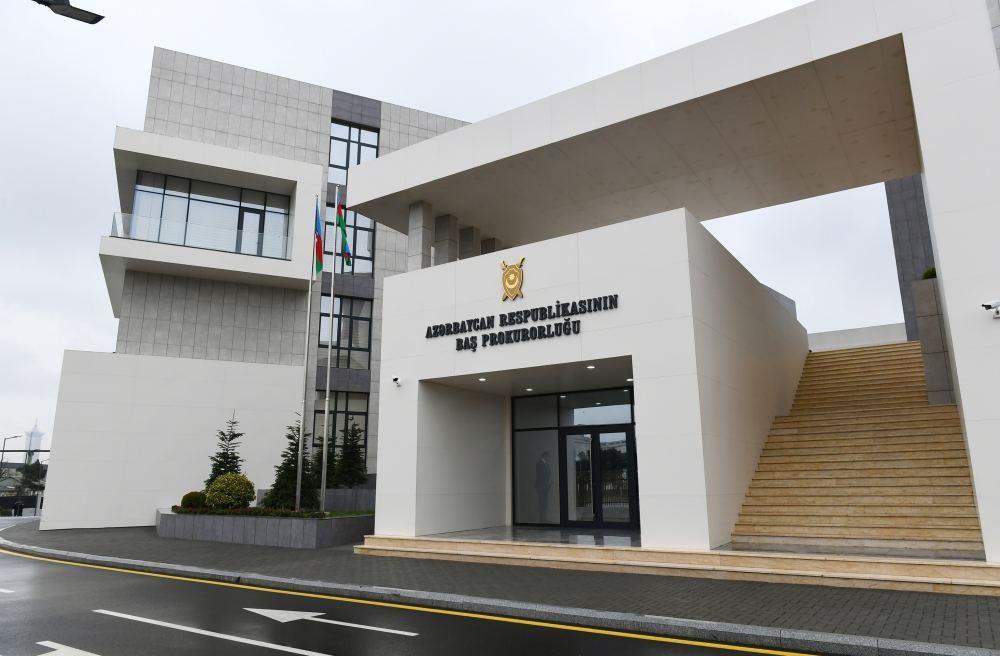Azerbaijan investigating Armenian-committed massacre in Kalbajar

By Vafa Ismayilova
The Azerbaijani Prosecutor-General's Office has launched a criminal investigation into the mass burial of civilians brutally massacred in April 1993 by the Armenian armed forces in Kalbajar region's Bashlibel village.
In an official statement posted on the website of the Prosecutor-General's Office on April 26, the law-enforcement agency said that intensive investigative actions over the case are ongoing.
Cruelty against civilians
"The criminal investigation revealed that along with other regions of Azerbaijan, in April 1993 especial ruthlessness and cruelty were demonstrated by the Armenian armed forces towards the civilian population in Bashlibel village, Kalbajar region," the statement said.
It stressed that according to the investigation materials, before the occupation, Bashlibel village with a population of 1996 people, 259 individual houses, 1 secondary school, 1 kindergarten, and 1 hospital was one of the largest villages of Kalbajar region. The village with an area of 3,232 hectares was located at the confluence of two mountain rivers, at the foot of Dalidagh mountain at an altitude of 2,000 meters above sea level, 64 km from Kalbajar's centre.
"It was established that on April 3, 1993, the Armenian armed forces attacked Bashlibel village, looted and burned the houses of the villagers. 62 persons who could not leave the village took refuge in natural caves in the mountainous terrain called Portda, located at the highest part of the village, about 3 km away. Out of 62 persons, 48 were villagers from Bashlibel, one - from Takhtabashi, 4 were residents of Lachin region, and 9 were servicemen defending the village," the statement added.
Twelve killed, 14 hostages, 29 survivors
On April 18, 1993, the Armenian armed forces equipped with automatic and large-caliber weapons searched for and found unarmed civilians harboring in the rocks in their home villages. From 3 to 9 p.m. that day, they began firing on caves where helpless civilians were hiding. As a result, 12 unarmed persons ( 12-year-old child, 16-year-old teenager, including 6 women and 6 men were deliberately killed.
Following the attack, 14 persons (3 children aged 2, 13, and 15, including 10 women, 4 men) were taken hostage.
Although they were later released from captivity, 9 of them died of emotional and psychological trauma.
The investigation also revealed that 7 out of 36 people who escaped from the criminal group members and sought refuge in caves, died in various villages of Kalbajar region from injuries received during the siege.
Residents of Bashlibel village who survived later separated into two groups and hid in different caves. Despite the threat to their lives, they approached the caves where their compatriots had been killed on the night of May 12, 1993, and left the scene after burying the bodies of 12 persons in two rows (6 graves in each row).
In the period after April 19, 1993, 29 survivors after living under siege for 113 days, managed to save their lives by reaching Chaykand village of Kalbajar region, and then crossing the Tartar river and Goshgar mountain in the direction of Dashkasan region and reaching Zivlan village of Dashkasan in July 1993.
According to the court decision on the exhumation of the bodies, relevant investigative actions have been carried out by the investigators of the Investigation Department of the Prosecutor General's Office in Bashlibel village, Kalbajar region, and the remains of 12 skeletal bodies buried at a depth of 50 cm were found.
In addition, during the investigation, various household items found at the crime scene - in the caves where civilians were hiding, cartridges and bullets proving the intentional killing of civilians were packed and registered in accordance with the requirements of criminal procedure legislation. During the drone inspection of Bashlibel village, it was also established that all residential houses, administrative buildings and infrastructure that existed in the village before the occupation were completely destroyed.
Further probes into Armenian crimes
To identify the victims, samples of DNA (deoxyribonucleic acid) were taken from the remains of the corpses and family members who claimed to be close relatives of the buried persons, medical-forensic examinations have been appointed to study molecular-genetic and other features. At present, other necessary investigative and search operations are underway to identify the surviving witnesses of the incident, interrogate them and determine the circumstances relevant to the case, the Prosecutor-General's Office stated.
It stressed that it will continue its activities to investigate the crimes against peace and humanity committed by Armenia against Azerbaijani citizens since the 1990s, to identify the perpetrators, and bring them to justice before national and international courts in accordance with Azerbaijani President Ilham Aliyev's instructions and recommendations.
In its statement, the Prosecutor-General's Office named all the victims of the Armenian atrocities in Bashlibel village.
Kalbajar was among seven Azerbaijani regions that got occupied by the Armenian armed forces during the first Karabakh war. Azerbaijan regained control over the region as a result of a peace deal signed by Baku, Moscow and Yerevan to end the 44-day war in November 2020.
As a result of Armenia's occupation of Kalbajar, 511 people were killed and 321 people were captured and went missing. Armenian occupiers destroyed more than 500 industrial, construction, catering, and retail facilities, 97 schools, and 76 health facilities. Kalbajar region’s 53,340 residents became IDPs.
--
Follow us on Twitter @AzerNewsAz
Here we are to serve you with news right now. It does not cost much, but worth your attention.
Choose to support open, independent, quality journalism and subscribe on a monthly basis.
By subscribing to our online newspaper, you can have full digital access to all news, analysis, and much more.
You can also follow AzerNEWS on Twitter @AzerNewsAz or Facebook @AzerNewsNewspaper
Thank you!
